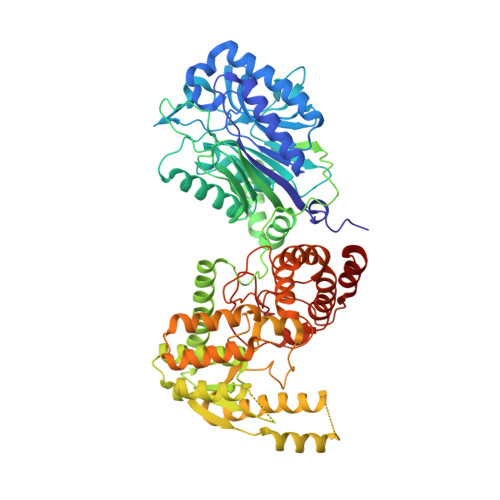Regulation of active site coupling in glutamine-dependent NAD(+) synthetase.
LaRonde-LeBlanc, N., Resto, M., Gerratana, B.(2009) Nat Struct Mol Biol 16: 421-429
- PubMed: 19270703
- DOI: https://doi.org/10.1038/nsmb.1567
- Primary Citation of Related Structures:
3DLA - PubMed Abstract:
NAD(+) is an essential metabolite both as a cofactor in energy metabolism and redox homeostasis and as a regulator of cellular processes. In contrast to humans, Mycobacterium tuberculosis NAD(+) biosynthesis is absolutely dependent on the activity of a multifunctional glutamine-dependent NAD(+) synthetase, which catalyzes the ATP-dependent formation of NAD(+) at the synthetase domain using ammonia derived from L-glutamine in the glutaminase domain. Here we report the kinetics and structural characterization of M. tuberculosis NAD(+) synthetase. The kinetics data strongly suggest tightly coupled regulation of the catalytic activities. The structure, the first of a glutamine-dependent NAD(+) synthetase, reveals a homooctameric subunit organization suggesting a tight dependence of catalysis on the quaternary structure, a 40-A intersubunit ammonia tunnel and structural elements that may be involved in the transfer of information between catalytic sites.
- Department of Chemistry and Biochemistry, University of Maryland, College Park, Maryland 20742-2021, USA. nlaronde@umd.edu
Organizational Affiliation:



















